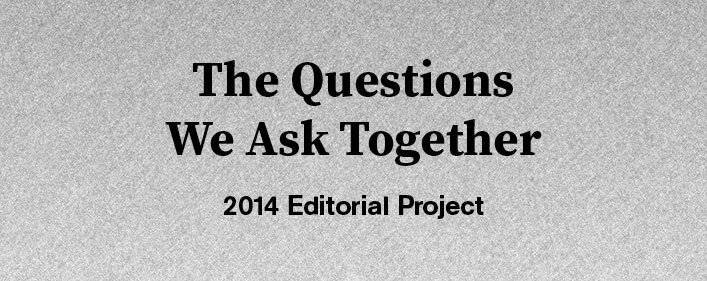How is time a material in this work?
Socially engaged practices rely on time; time on the part of the artist when making the work, and time required for the viewing of the work. The final work more often than not stands in for the process involved in the creation of the work. In this way, time as a material in social practice actually becomes a question of time as a process of commitment.
Grant Kester talks about time in relationship to how much time commitment an artist gives to a community in which they want to make work (in his book The One and the Many). For Kester, a successful work is one where the artist spends a significant amount of time developing the work in collaboration with participants, rather than one where the artist parachutes into a community, performs a work and then leaves. Time here becomes a symbol for whether or not the artist wants to stay and become a part of the community they are working with, or whether they treat a community as a site for dropping in and dropping out again. The implication is that works that require the sustained development of relationships over time, works that are developed in conversation and dialogue with a community, are going to be stronger offerings because of the time spent with the community determining which actions or interventions constituents would want to see happen in their space.
One of the more prominent examples that Kester uses to demonstrate this is Park Fiction in Hamburg. Park Fiction was developed to halt the building of high rises that would have blocked community access to the waterfront. As a response to these plans, Park Fiction developed a park in direct consultation with the community that would be affected, letting sustained dialogue lead the development process, making sure that the park would meet the needs of its users by giving those most likely to use the park a say in its development. The Park Fiction intervention was successful in halting the high rise development and instead the area of land became a public use park that was developed by and large with its users.
Claire Bishop approaches the time of socially engaged practice a bit differently in Artificial Hells. For Bishop time becomes a significant part of the viewing of a work. She points out that social practice often leads to the development of sustained personal relationships through continued contact with and participation in multiple viewings of a work. For Bishop, the time involved in viewing a socially engaged work may make it more difficult for an objective and distanced way of writing about the work. In this way, the ways that we theorize about social practices may be inherently flawed. Which brings up the question of whether or not we can get enough objective distance away from the work (through time) that we can begin to write objectively about work that required so much commitment to enter into in the first place, and more importantly do we even want that kind of objectivity when talking about these works?
If time is a process, what does that mean for how we think and talk about socially engaged work? What impact does theorizing about these practices before artists have had time to develop or think through what the work actually does have on the work? Ultimately it may be important to give socially engaged practice a little bit more time, time to reveal to us the distinctions between practices, and time for the work to show us what it intends to do, rather than try to fit works to a theory.
About the contributor: Amber Landgraff is a Toronto based curator and writer. She has an MFA in Criticism and Curatorial Practices, is one of the organizers of FEAST Toronto (an ongoing community dinner and microfunding event), and writes, often about art, politics and labour, for both Fuse and C Magazines. She is currently the director at Xpace Cultural Centre, a not-for-profit artist-run centre that focuses on supporting and offering professional opportunities to emerging artists. xpace.info
